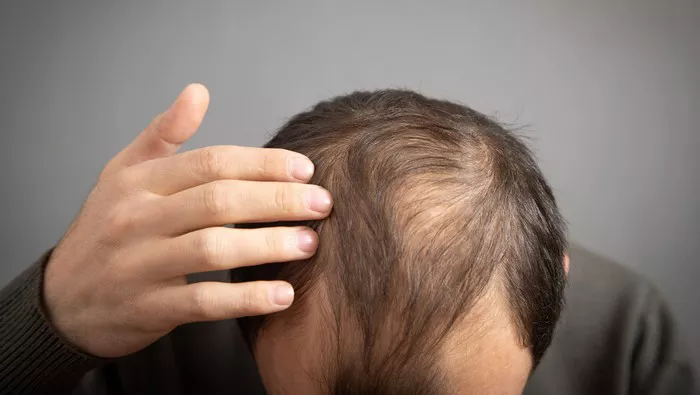Hair transplants have become a popular solution for those experiencing hair loss, offering a way to regain a fuller head of hair and boost self-confidence. However, one common concern is that some hair transplants look unnatural or “fake.” This article delves into the reasons behind this issue and explores how to achieve more natural-looking results.
Introduction to Hair Transplants
Hair transplantation is a surgical technique that moves hair follicles from a part of the body, known as the donor site, to a bald or balding part of the body, known as the recipient site. This procedure is primarily used to treat male pattern baldness but is also applicable for women. The two main methods of hair transplantation are Follicular Unit Transplantation (FUT) and Follicular Unit Extraction (FUE).
Follicular Unit Transplantation (FUT)
FUT involves removing a strip of scalp from the donor area, dissecting it into individual follicular units, and then implanting these units into the recipient area. This method can transplant a large number of grafts in a single session.
Follicular Unit Extraction (FUE)
FUE involves extracting individual hair follicles from the donor area using a punch device and implanting them directly into the recipient area. This method is less invasive and leaves minimal scarring.
Despite advancements in techniques, some hair transplants still result in an unnatural appearance. Understanding the factors that contribute to this can help both patients and practitioners achieve better outcomes.
Key Factors Contributing to Fake-Looking Hair Transplants
1. Poor Planning and Design
A successful hair transplant begins with meticulous planning and design. This includes determining the appropriate hairline, ensuring it suits the patient’s facial features, and mimicking natural hair growth patterns. A poorly designed hairline or an unnatural hair density can result in an artificial appearance.
Hairline Design
The hairline is a critical aspect of hair transplant aesthetics. A natural hairline is irregular and soft, with a gradual transition from the forehead to the hair. An overly straight or overly dense hairline can look unnatural. Additionally, the angle and direction of the transplanted hair must mimic the natural growth pattern to blend seamlessly with the existing hair.
2. Density and Distribution
Natural hair density varies across different regions of the scalp. Transplanting too many grafts too close together or too few grafts spread too thin can create an unnatural look. Achieving a balanced density that mimics natural hair growth is essential for a realistic outcome.
3. Graft Selection and Placement
The selection and placement of grafts play a significant role in the final appearance of a hair transplant. Using grafts with the wrong number of hairs or placing them incorrectly can lead to an unnatural look.
Follicular Unit Selection
Hair follicles naturally occur in groupings of one to four hairs. Single-hair grafts are typically used for the hairline to create a soft, natural look, while multi-hair grafts are used behind the hairline to add volume. Incorrectly placing multi-hair grafts in the hairline can result in a pluggy, fake appearance.
4. Surgeon Skill and Experience
The expertise of the surgeon performing the hair transplant is perhaps the most crucial factor in achieving natural-looking results. An experienced surgeon understands the nuances of hair transplantation, including the importance of hairline design, graft selection, and placement. Inexperienced or unskilled surgeons may lack the precision needed for natural results.
5. Post-Operative Care
Proper post-operative care is essential for the success of a hair transplant. Poor care can lead to complications such as infection, graft failure, or improper healing, all of which can affect the final appearance. Following the surgeon’s post-operative instructions is crucial for achieving the best results.
6. Use of Outdated Techniques
Technological advancements have significantly improved the outcomes of hair transplants. However, some practitioners still use outdated techniques that can result in unnatural-looking hair. Modern methods such as FUE and advanced FUT techniques offer better results and should be preferred.
Achieving Natural-Looking Hair Transplants
1. Choosing the Right Surgeon
Selecting a qualified and experienced surgeon is the first step toward achieving a natural-looking hair transplant. Patients should research potential surgeons, review their portfolios, and consult with them to ensure they have the necessary skills and expertise.
See Also: When Should I Do a Hair Transplant: A Comprehensive Guide
2. Personalized Treatment Plans
Each patient’s hair loss pattern, hair type, and facial structure are unique. A personalized treatment plan that considers these factors is essential for natural-looking results. Surgeons should work closely with patients to develop a plan tailored to their specific needs.
3. Advanced Techniques and Technologies
Utilizing advanced techniques and technologies can significantly improve the outcomes of hair transplants. Methods such as robotic FUE, which offers precision and minimal scarring, and platelet-rich plasma (PRP) therapy, which promotes healing and graft survival, are examples of advancements that contribute to more natural results.
4. Realistic Expectations
Setting realistic expectations is crucial for patient satisfaction. Patients should understand that achieving a completely natural look may take multiple sessions and that the final results will gradually improve over time as the transplanted hair grows and blends with the natural hair.
5. Comprehensive Post-Operative Care
Following the surgeon’s post-operative care instructions is vital for the success of the hair transplant. This includes proper washing techniques, avoiding strenuous activities, and attending follow-up appointments to monitor progress and address any issues.
6. Continuous Education and Training
For practitioners, continuous education and training are essential to stay updated with the latest advancements in hair transplantation. Attending workshops, conferences, and courses can help surgeons refine their skills and offer the best possible results to their patients.
Conclusion
While hair transplants offer a viable solution for hair loss, achieving natural-looking results requires careful planning, skillful execution, and proper post-operative care. Understanding the factors that contribute to fake-looking hair transplants and taking steps to address them can help both patients and practitioners achieve more satisfying outcomes. By choosing the right surgeon, utilizing advanced techniques, and following a personalized treatment plan, patients can enjoy a fuller head of hair that looks and feels natural.


